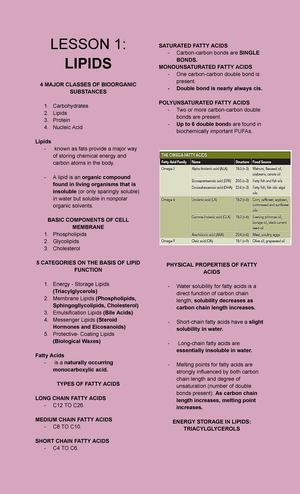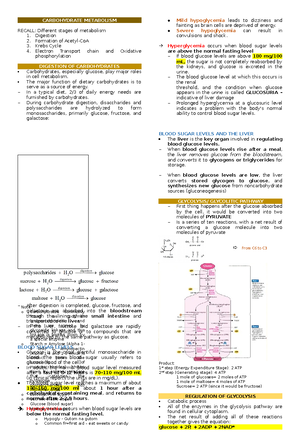- Information
- AI Chat
Was this document helpful?
Enzyme
Course: BIOCHEMISTRY (CHM3)
365 Documents
Students shared 365 documents in this course
University: Our Lady of Fatima University
Was this document helpful?

WEEK 7 - BIOCHEM MIDTERM
LECTURE #1 ENZYMOLOGY
Enzymes – a specific (mostly, protein but some
are ribonucleic acids) biocatalyst that is essential
in physiologic functions such as nerve
conduction, muscle contraction, degradation of
nutrients, and energy usage. All cells in the body
have thousands of different enzymes.
Inactive forms of enzymes called zymogens
(proenzymes) are larger in structure and must
be hydrolyzed to be activated.
May exist in different forms or isoforms called
isozymes and allozymes based in their physical
properties such as electrophoretic mobility,
solubility, or resistance to inactivation.
May be specific biomarker for disease in specific
tissues.
“Isozymes represent enzymes from different genes:
Allozymes represent enzymes from different alleles of the
same gene. Can be used interchangeably.”
ENZYME STRUCTURE
Active site - a water-free cavity the binding site
of a substrate.
Allosteric site – binding site of regulator
molecules.
2 CLASSIFICATION OF ENZYMES
1.Simple enzyme – an enzyme composed only of
protein.
2.Conjugated enzyme - enzyme composed of
protein and non-protein part.
Enzyme additional components (accessories)
include:
Cofactor – “helper molecules” that regulate
catalytic reactions.
Activator – inorganic cofactors usually a metallic
ion (Zn2+, Mg2+, Mn2+, Fe2+) and non-metallic
ion (Cl-) necessary for enzyme activity.
Coenzyme - organic cofactors such as vitamins.
Enzyme - Cofactor = Apoenzyme (inactive)
Enzyme + Cofactor = Holoenzyme (active)
2 TYPES OF COENZYMES
1.Prosthetic group – permanently bound to an
enzyme.
2.Co-substrate – transiently bound to an enzyme.
COFACTORS
1.Activators
Common metallic activators include; Calcium,
Iron (II), Magnesium (II), Manganese (II), Zinc
and Potassium.
Common non-metallic activators; Bromine and
Chloride
Modulates enzymatic reactions
2.Coenzymes
Organic cofactors that are usually nucleotide
phosphates and vitamins.
When coenzymes are bound to enzymes, the
coenzyme portion is now called a prosthetic
group.
Increases enzymatic reactions.
ENZYME PROPERTIES
Catalysis - ability to accelerate the rate of a
chemical reaction.
Enzyme Specificity – the capacity of a protein
catalyst to bind to a selected
molecules/substrates.
Enzymes are stereoselective - asymmetric active
site. Has two known models for binding
specificity;
1.The lock and key model – the shape of the
binding site is the same shape of the
substrate. No shape change.
2. The induced fit model – the shape of the
binding site is flexible and adapts to shape of
the substrate. The enzyme changes shape.
Enzyme Concentration and Activity –
concentration of enzymes is directly proportional
to the rate of synthesis and degradation.
Students also viewed
- Biochemistry: Enzymes, Bioenergetics, Carbohydrates, Carbohydrate Metabolism
- 5 Biochem Midterms Carbohydrates
- Biochem-midterm - A biochemistry reviewer
- Biochem Lecture Midterms ALL
- Biochem reviewer lec - this is the summary of the lessons discussed during the prelim of the first
- Carbohydrate Metabolism (LEC)








